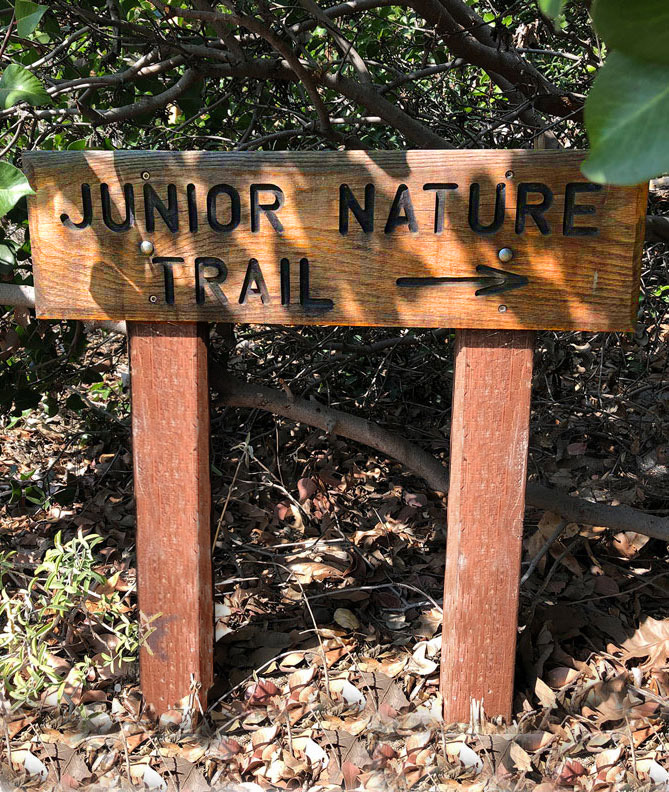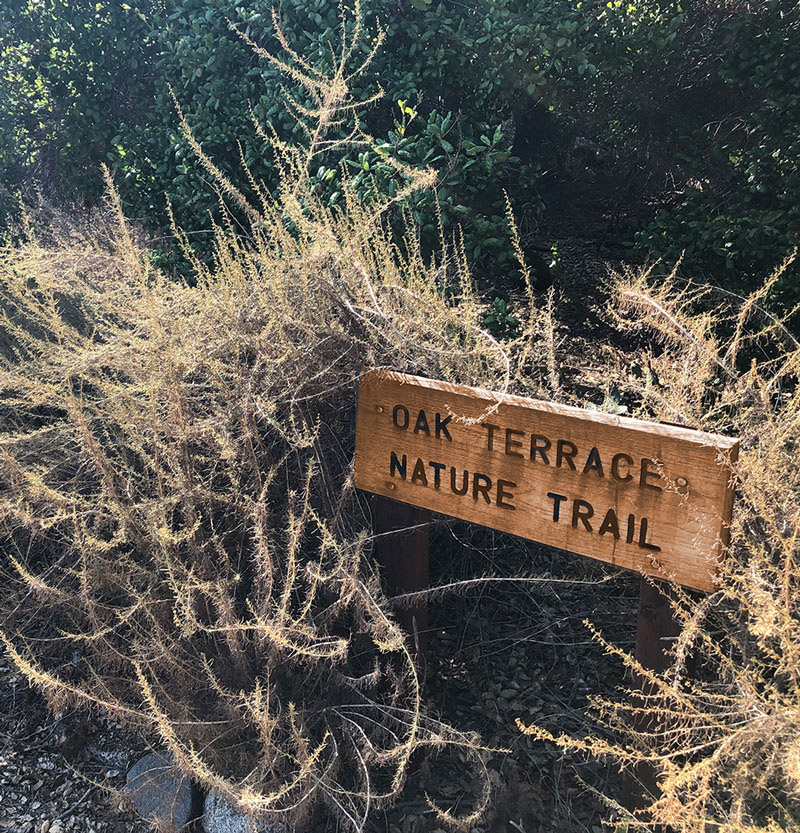Trails

Fire Ecology Trail
This trail begins between the pond (just north of the Nature Center) and the public parking lot.
The Fire Ecology Trail section and all the surrounding area burned in the brush fire of October27, 1993 which swept through nearly 6,000 acres of the foothills, including approximately two-thirds of the Eaton Canyon Natural Area, and destroyed the Nature Center building. The slopes and flats in the park continue to recover from the fire, and the plants on this trail show several ways that plants regrow afterward. Fire has been a natural factor in the San Gabriel Mountain foothills for many thousands of years.The Coastal Sage Scrub plant community in the San Gabriel Valley generally occurs below 1,500 feet on sloping land below the foothills. This community of low, scrubby plants is the most endangered vegetation type in Southern California because of pressures from urbanization, flood control projects, and rock quarries. California sagebrush is the dominant shrub, with other common associates being white sage, black sage, and flat-topped buckwheat. Plants in this group are adapted to the hot, dry summers and cool, moist winters we have in Southern California. Their leaves may be small, sticky, hairy, or whitish-coated, to reduce water loss, and often are fragrant. Many species are drought-deciduous, which means they lose their leaves to reduce stress during the dry summer and fall months. Individual plants of the Chaparral Community, which dominates the slopes above the park, are found on the trail.
Plants in these communities commonly respond to fire in two ways. They may regrow from seeds from the original burned plant, or they may resprout vigorously from the basal stump (bud) and roots left behind. Species using the first method are called “seeders”, and those using the latter, “sprouters” (some things are logical). Many plants use both techniques to re-establish themselves. Some seeds require heat to break a tough outer coat and some need charcoal or smoke from fire to sprout. Look for evidence of charred wood at the bases and on old stems of shrubs along the trail.
There are numbered marker posts along the trail which can be used as reference points. Click button below to view the Fire Ecology Trail Guide, or you may pick up a complimentary trail guide in the Nature Center and take it with you. It will give you information about what you might expect to see at each stop. In addition to those mentioned on Page 1, plants include coffeeberry, laurel sumac, penstemon, scale-broom, sycamore, currant, coast live oak, yucca, mulefat, yerba santa, little-leaf redberry, cactus, poison oak, and matilija poppy. You may also see various rocks, birds, squirrels, rabbits, lizards, snakes and insects.
Junior Nature Trail
This trail starts at the north end of the Employee Parking Lot and winds around the area near the Nature Center. It is flat and well-suited for small children and people who are physically limited. The total distance is less than a quarter of a mile.
This trail was developed for small children in memory of Mary Shannon, who was a volunteer here at the nature center for many years and Past President of the Nature Center Associates. The Student Naturalists of Eaton Canyon refurbished it in 1999. Please encourage children to stop, look, and listen for birds and other wildlife on the trail.
There are numbered marker posts along the trail which can be used as reference points. Click button below to view the Junior Nature Trail Guide, or you may pick up a complimentary trail guide in the Nature Center and take it with you. It will give you information about what you might expect to see at each stop, such as the pond, laurel sumac, California sagebrush, coast live oak, poison oak, prickly pear cactus, yucca, coffeeberry, white sage, black sage, scale-broom, rocks, birds, squirrels, rabbits, lizards, and snakes.


Oak Terrace Nature Trail
This is a looping trail about one-quarter of a mile long. It begins at the work yard, approximately 100 yards north of the Nature Center, at the base of the bluff on which private homes are situated. There are numbered marker posts along the trail which can be used as reference points. Click button below to view the Oak Terrace Nature Trail Guide, or you may pick up a complimentary trail guide in the Nature Center and take it with you.. It will give you information about what you might expect to see at each stop along the trails. Plants along the way include coast live oak, poison oak, white nightshade, white sage, black sage, coffeeberry, laurel sumac, yucca, dodder, toyon, sycamore, horehound, and elderberry. You may also see various rocks, birds, squirrels, rabbits, lizards, snakes and insects.
Take photos, memories, and trash away with you, but nothing else – no plants, animals, sticks, stones, or leaves. Enjoy your visit and allow others to enjoy theirs.

